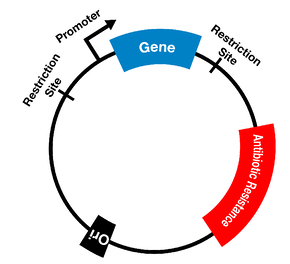Antibiotics including antibacterial agents, antiviral agents, antiprotozoal agents, and antifungal agents have some specific characteristics that distinguish them from other antimicrobial agents that are used for the treatment of microbial infections as well as in the control of microbes on inanimate surfaces. Some of these features are highlighted in this unit.
- Selective Toxicity: Antibiotics must be selectively toxic as they dissipate their antibacterial properties in vivo. This means that antibiotics should kill or inhibit pathogens without causing any harm or damage to the host (patient) in anyway.
- Spectrum of Activity: Antibiotics should have a reasonable spectrum of activity (broad or narrow), showing efficacy over a given or wide variety of bacteria.
- Antibiotics should not eliminate the normal microbial flora of the body as they exert their antibacterial properties in vivo.
- They should be specific in their action. Thus, antibiotics should be readily directed to the site of infection where their effect is highly needed in the body.
- Antibiotics should not be too costly so that their prescription should not be biased or based on their price or cost.
- Antibiotics should not be easily neutralized or excreted from the body until it has performed its function. Thus, they should be chemically stable in vivo.
- Microorganisms should not become easily resistant to them.
- It should be able to exert its antimicrobial function even when highly diluted in the host’s body fluid.
- The drug should remain potent enough in vivo while releasing its antimicrobial activity.
- It should not be easily excreted from the body especially before it has performed its function.
- It should be chemically-stable and it should have a long shelf-life.
- It should not eliminate the normal flora of the host.
- It should have a wide spectrum of activity with the ability to destroy or inhibit many different species of pathogenic organisms.
- It should be nontoxic to the host and without undesirable side effects.
- It should complement the activities of the host’s immune system.
- It should remain active in tissues and body fluids.
- It should be readily delivered to the site of infection without delay.
- It should not be excessively expensive, and must be readily available.
- It should not disrupt the health status of the host by causing allergic reaction.
References
Ashutosh Kar (2008). Pharmaceutical Microbiology, 1st edition. New Age International Publishers: New Delhi, India.
Bisht R., Katiyar A., Singh R and Mittal P (2009). Antibiotic Resistance – A Global Issue of Concern. Asian Journal of Pharmaceutical and Clinical Research, 2 (2):34-39.
Courvalin P, Leclercq R and Rice L.B (2010). Antibiogram. ESKA Publishing, ASM Press, Canada.
Denyer S.P., Hodges N.A and Gorman S.P (2004). Pharmaceutical Microbiology. 7th ed. Blackwell Publishing Company, USA.
Ejikeugwu Chika, Ikegbunam Moses, Ugwu Chigozie, Eze Peter, Iroha Ifeanyichukwu, and Esimone Charles (2013). Phenotypic Detection of Klebsiella pneumoniae Strains – Producing Extended Spectrum β-Lactamase (ESBL) Enzymes. Scholars Academic Journal of Biosciences. 1(1):20-23.
Ejikeugwu Chika, Iroha Ifeanyichukwu, Adikwu Michael and Esimone Charles (2013). Susceptibility and Detection of Extended Spectrum β-Lactamase Enzymes from Otitis Media Pathogens. American Journal of Infectious Diseases. 9(1):24-29.
Ejikeugwu Chika, Iroha Ifeanyichukwu, Adikwu Michael and Esimone Charles (2013). Susceptibility and Detection of Extended Spectrum β-Lactamase Enzymes from Otitis Media Pathogens. American Journal of Infectious Diseases. 9(1):24-29.
Ejikeugwu Chika, Ugwu C.M., Ikegbunam N.M, Araka C.O., Iroha I.R., Adikwu M.U and Esimone C.O (2012). Evaluation of antibacterial activity of the leave extracts of Buchholzia coriacea. Asian Journal of Pharmaceutical and Biological Research. 2(4):204-208.
Ejikeugwu Chika, Ugwu Malachy, Iroha Ifeanyichukwu, Gugu Thaddeus, Duru Carissa, Eze Peter, and Esimone Charles (2013). Detection and antimicrobial susceptibility of some Gram negative bacteria producing carbapenemases and extended spectrum beta lactamases. International Journal of Microbiology and Immunology Research, 2(6):064-069.
Ejikeugwu Chika, Umeokoli Blessing, Iroha Ifeanyichukwu, Ugwu Malachy, Esimone Charles (2015). Phytochemical and Antibacterial Screening of Crude Extracts from Leaves of Wonderful Kola. American Journal of Life Sciences. Special Issue: Microbiology Research, 3(2):5-8.
Ejikeugwu P.C., Ugwu C.M., Araka C.O., Gugu T.H., Iroha I.R., Adikwu M.U and Esimone C.O (2012). Imipenem and Meropenem resistance amongst ESBL producing Escherichia coli and Klebsiella pneumoniae clinical isolates. International Research Journal of Microbiology. 3(10):339-344.
Fernandes Prabhavathi (2006). Antibacterial discovery – the failure of success? Nature Biotechnology, 24(12):1.
Finch R.G, Greenwood D, Norrby R and Whitley R (2002). Antibiotic and chemotherapy, 8th edition. Churchill Livingstone, London and Edinburg.
Hart C.A (1998). Antibiotic Resistance: an increasing problem? BMJ, 316:1255-1256.
Jayaramah R (2009). Antibiotic Resistance: an overview of mechanisms and a paradigm shift. Current Science, 96(11):1475-1484.
Discover more from Microbiology Class
Subscribe to get the latest posts sent to your email.





